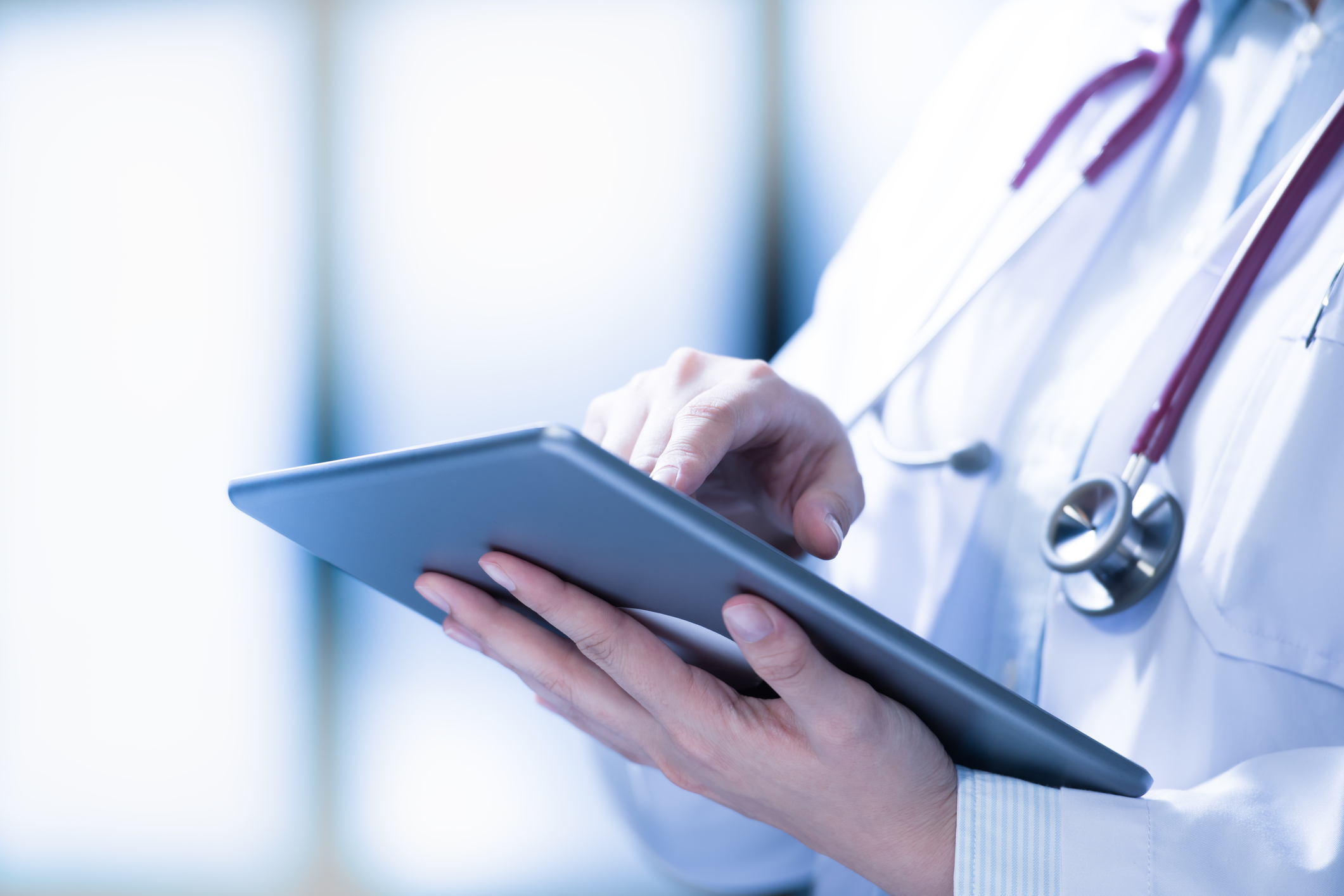Many smart device developers have set their sights on the healthcare industry. And for good reason: it’s an industry ripe for development, with plenty of room for everything from tiny improvements in staff productivity to revolutionary breakthroughs in medical tech.
We’ll be taking a look at some of the interesting medical sensors and other smart devices currently undergoing research for future use in smart hospitals and exploring how fresh technology could potentially impact the lives of patients and hospital workers.
What smart healthcare devices are under development? And how might IoT sensors in healthcare settings affect patients and workers?
There are numerous ideas currently being researched—far too many to list in just one article. The following list represents some of the exciting device concepts circulating among IoT developers, as well as some devices that are already being tested in real-world scenarios. While some are best used in smart hospital settings, others could be placed in patient homes, nursing facilities, and even gyms or other public places. Soon, patients could bring the hospital along wherever they go.
- Hygiene-Detecting Infrared Sensors: The importance of proper hand washing and disinfection protocols in hospitals cannot be overstated. Researchers are developing infrared sensors that provide visual or audible alerts if a staff member or visitor forgets to thoroughly sanitize their hands before entering a patient’s room.
- Thermal/Movement Sensors: Before an impending health crisis occurs, patients sometimes adopt distinct movement patterns, such as twitching, writhing, or grasping at places that hurt. Sensors placed in or above a patient’s bed can detect thermal changes and movement patterns that could alert staff that a patient might be in trouble. This early detection could hasten response times and potentially promote better outcomes.
- Digital Bedside Displays: This development aims at improving the patient experience by providing bedside tablets so patients can check their treatment schedules, view their patient charts and medical history, and receive tests and imaging results without having to ring for a nurse or wait for hours with no news.
- Important Information Displays: Additional tablets hung outside of a patient’s room could provide quick updates to a patient’s condition so that all staff members entering the room know what to expect. This information could be anything from a patient’s updated fall risk to the latest infection status or required special safety protocol.
- Wearables For Home Use: In non-critical cases that require constant monitoring, but not necessarily intervention, there’s no reason a patient should have to stay in a hospital bed when they could recover in the comfort of their own homes. Remote sensors that transmit data directly to doctors could make that a reality sooner rather than later. As a bonus, knowing they can receive treatments in their own homes could encourage some people who otherwise would avoid the hospital to seek help.
- Ambient Movement Sensors: Placed in an elderly patient’s home or care facility, these sensors could alert doctors when a patient appears to be moving slowly or differently than their normal baseline, eating less frequently, having trouble with specific activities, or has fallen and gotten injured.
- Remote Thermometers: Patients at high risk for fever from infection could benefit from a thermometer that alerts medical staff when a temperature spike is significant enough to warrant treatment, even if that patient is asleep or otherwise unable to report their discomfort.
- Heart Failure Detectors: Days before heart failure reaches a crisis level, the patient may experience some changes to blood flow and breathing that could be detected by remote wearables. In some cases, these devices can alert the patient and tell them what to do to prevent worsening of their condition, or when it’s necessary to seek emergency care.
- Cough Sensors: Some researchers are putting forth the idea of using cough sensors to detect who in a large crowd may be experiencing flu-like symptoms. This information could be used for any number of purposes, including contact tracing or tracking the origin of an outbreak.
- Illness Progression Monitors: Advanced monitors could be used to detect the very first signs of an illness, signals that the illness could be dangerously worsening, or indications that a patient is recovering and may no longer be contagious. This could improve patient outcomes and help to prevent the spread of disease.
What changes can we expect as a result of all these IoT sensors in healthcare settings?
The first and most obvious change in the patient experience will come from suddenly being surrounded by new and unfamiliar tech in a place where information and critical decisions normally come from human doctors and nurses. Some people are pushing back against the adoption of sensors in healthcare settings because they fear that technology could replace (and eventually erase) the human connection and expertise we rely on from human healthcare professionals.
The solution, at least in the early adoption phases, if not in perpetuity, is to use new technology to supplement the care of doctors and nurses, rather than function in place of that human attention and expertise. Patients must know that each data point transmitted by their sensors will be read by human experts trained to recognize patterns and signals in the noise. Just as we now trust trained doctors to read EKG strips and generate reliable test results from a few drops of blood, confidence in every new piece of technology must be built over time.
Additionally, maintaining patient privacy and confidentiality could become tricky in the midst of all of these sensors capturing each movement and change in vital signs. For now, developers are addressing these concerns by moving away from the use of high-def video recording in favor of thermal imaging and silhouette tracking. Silhouettes and thermal images are far less likely than video images to violate patient privacy and confidentiality, so this may be a happy middle ground on which most people can agree.
One last solution is to allow patients to remain in control of as much data collection as possible. If a patient declines a particular sensor, wants to unhook themselves to use the restroom or change clothes in private, or has any other reasonable requests, these needs should take priority over the desire to keep patients under observation at all times. Increasing patient comfort with IoT sensors is important, because widespread use could do so much good for patients and staff alike.
When implemented thoughtfully, smart healthcare devices could lead to significant improvements in several important areas.
Smart devices have the potential to:
- Improve health outcomes: By detecting changes to vital signs, movement, temperature, or behavioral patterns that require treatment before a true crisis occurs, doctors can provide critical early treatment and potentially avoid emergencies. Notably, this monitoring can also occur when a doctor is not in the room, extending the time patients spend under direct observation and greatly heightening the chances that an important clue is detected.
- Reduce medical mistakes: Sadly, more than 400,000 people die every year as a result of medical mistakes. Advanced sensors can not only help doctors catch important signs that may have otherwise been missed, but they can also alert staff members when hygiene, safety, and other crucial protocols are not being properly followed.
- Make the patient experience safer and more pleasant: Real-time updates to schedules, treatment plans, care team members, and other information on bedside displays could lead to happier patients and fewer calls to the nurses’ station for simple questions. Additionally, allowing patients and their trusted family members to look over test results and view patient charts could boost transparency and trust, while further reducing medical mistakes. Sometimes all it takes is one patient catching a clerical error to save his or her own life.
- Protect healthcare workers: Remote sensors open the doors for contactless treatment in cases where there is a significant disease transmission risk. Also, reducing medical mistakes will benefit healthcare organizations by decreasing lawsuits that occur as a result of those mistakes.
- Save space for critical patients: If remote monitoring technology allows non-critical patients to undergo testing and observation from home, it frees up hospital resources to treat very sick and injured patients and to schedule surgeries more rapidly.
- Mitigate the shortage of healthcare workers: When front-line healthcare workers are in short supply, technology can step in and make up the difference. Every little improvement—streamlining scheduling, automating the collection of vital signs and other data, opening digital communication channels for patients, and more—lessens the load felt by nurses and doctors who find themselves caring for patients in larger and larger ratios.
Some smart hospital rooms are already cropping up at cutting-edge research hospitals, such as Stanford Hospital and the Medical University of South Carolina. Though these deployments have a primary focus on improving communications and clearly laying out schedules and protocols so patients and visitors stay informed, we might begin to see some exciting deployments of smart health sensors being incorporated into hospital rooms before too long.

